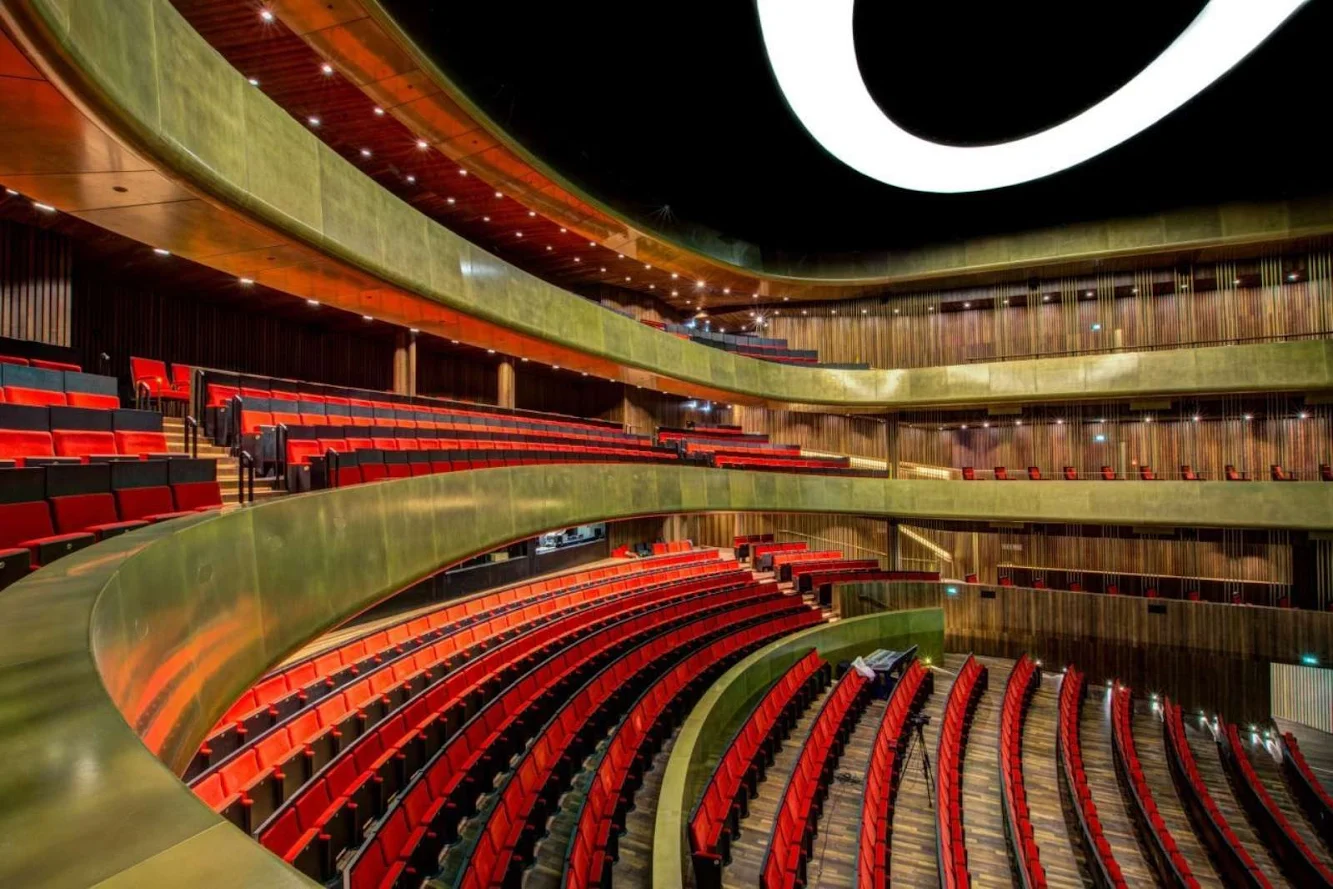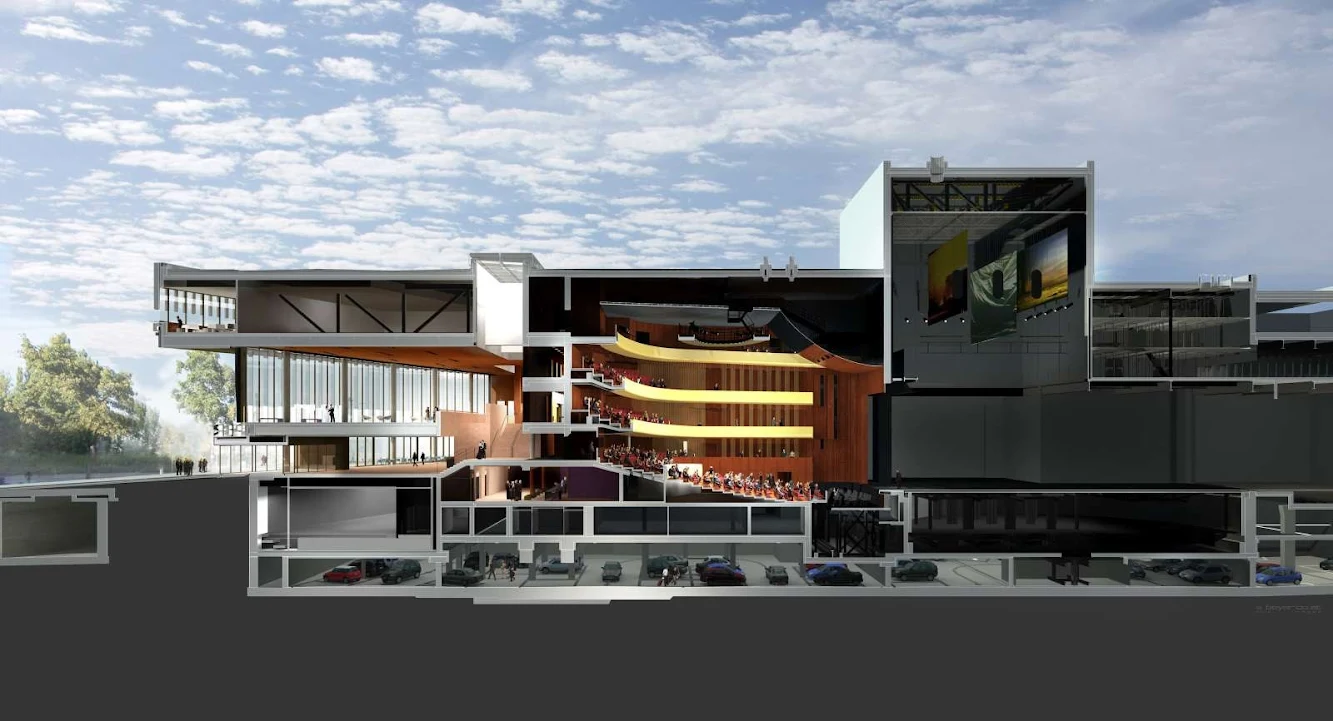
In the spring of 2013 the city of Linz will have a newly constructed music theatre, which will not only be of vital importance as a venue for the cultural scene in upper Austria but, with its architecture and placement, also generate a new quality of urban development for the city.

The structure is based on the design of british architect Terry Pawson, who won the competition in 2006, with a plan founded on the quixotic notion of displacing part of a major thoroughfare to allow the main entrance to open onto the park and draw the citizenry into those public spaces, providing what Mr. Pawson has called “a new, common living-room for the whole city.”

In order to allow the new Opera to open directly onto the Volksgarten, or 'Peoples Park', the project involved re-routing the city’s principal dual carriageway in the area of Blumau south of the city centre.

The complex poses a counterbalance to the old city and the Brucknerhaus, the former home of the Bruckner Orchestra Linz, on the Danube River at the other end of the Landstrasse, the main street. Together with the park, the new building will provide a cultural focus at the end of the primary pedestrian route through the City, connecting it to the Hauptplatz and the River Danube.

The vertical cadence of the façade has neoclassical overtones and this rhythm is further developed by the interior, with screens of increasing fineness being used to define the public areas and the main auditorium. the theatre is a five-storey building with two floors of cellars and the stage tower comprises three further levels.

The façade surrounds the building like a huge curtain and is wrapped around it. the 1.5-metre-wide areas that are created are either decorated or fully glassed for illumination, depending on what is needed. in this way, the window openings are easily integrated without disrupting the uniform character of the external cover.

Pawson also continues with the curtain metaphor on the inside. the Linz Opera will be the first theatre in Austria with a multi-functional turning stage, which at 32 metres is the centre of the stage.

The enormous size of the Linz Opera House, which covers two blocks, also contributes to its efficiency; apart from the stage and the auditorium, it unites the production workshops, storage facilities, rehearsal rooms and auxiliary stages under one roof. the generously dimensioned main foyer is located on the first floor and, due to its floor-to-ceiling glass açade, visually extends into the green area of the park.

The auditorium itself is designed as a compact gallery theatre with interior connecting stairs, to provide an excellent view of the stage from each of the 970 seats, as well as perfect acoustics. Steam-heated acacia wood on the walls and ceiling and light oak floor boards form a mat shell that forms a contrast between the golden balconies which are fitted with a smooth surface made of liquid metal.

In contrast to classic gold plating, it has a diffuse shimmer and a deep glow in artificial light when reflected. It is especially the detailed design that bears the trademark of the austrian architects, while the style of the structure can be described as a productive interaction of national and international architectural expertise.












Location: Linz, Austria Architects: Terry Pawson Architects Executive Architects: Architekturconsult zt gmbh / archinauten – dworschak + mühlbachler architekten zt gmbh Structural Engineer: Schimetta Consult Environmental Engineer: Wagner & Partner Quantity Surveyor: Ibb - Munich Theatre Consultants: Theatre Project Consultants Acoustician: Kahle Acoustics Lighting Consultant: Barrie Wilde Cladding Consultant: Bruce Briggs Landscape Design: Land in Sicht, Wien Area: 52.420 m2 Cost: € 150 milion Year: 2013 Client: Mtg - Musiktheater GmbH Photographs: Helmut Karl Lackner , Dirk schoenmaker